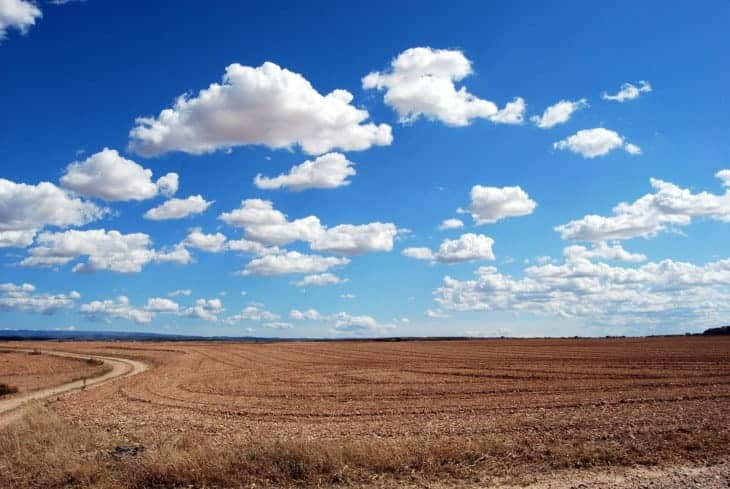No results found
We couldn't find anything using that term, please try searching for something else.

Distribution Characteristics of Cloud Types and Cloud Phases over China and Their Relationship with Cloud Temperature
figure 1 . Zonal average sample size over China and its surrounding areas from June 2006 to June 2020. (a) Number of observation profiles. (b)
figure 1 .
Zonal average sample size over China and its surrounding areas from June 2006 to June 2020. (a) Number of observation profiles. (b) Number of observed orbits.
figure 1 .
Zonal average sample size over China and its surrounding areas from June 2006 to June 2020. (a) Number of observation profiles. (b) Number of observed orbits.
figure 2 .
(a) Horizontal distribution of prevailing cloud types throughout the year. (b) The terrain of the East Asia continent .
figure 2 .
(a) Horizontal distribution of prevailing cloud types throughout the year. (b) The terrain of the East Asia continent.
figure 3 .
horizontal distribution of cloud occurrence frequency : (a) low overcast ( transparent ) , (b) low overcast ( opaque ) , (c) stratocumulu , (d) low break cumulus ( transparent ) , (e) altocumulus ( transparent ) , (f) altostratus ( opaque ) , (g) cirrus and (h) deep convective cloud (unit: %).
figure 3 .
horizontal distribution of cloud occurrence frequency : (a) low overcast ( transparent ) , (b) low overcast ( opaque ) , (c) stratocumulu , (d) low break cumulus ( transparent ) , (e) altocumulus ( transparent ) , (f) altostratus ( opaque ) , (g) cirrus and (h) deep convective cloud (unit: %).
figure 4 .
Distribution of prevailing cloud types in different seasons: (a) spring ( MAM ) , (b) summer ( JJA ) , (c) autumn ( SON ) , and (d) winter (DJF).
figure 4 .
Distribution of prevailing cloud types in different seasons: (a) spring ( MAM ) , (b) summer ( JJA ) , (c) autumn ( SON ) , and (d) winter (DJF).
figure 5 .
Percentage of cloud type per season (unit: %).
figure 5 .
Percentage of cloud type per season (unit: %).
Figure 6.
Horizontal distribution of the prevailing cloud type at different altitude layers: (a) 0–1 km , (b) 1–2 km , (c) 2–3 km , (d) 3–4 km , (e) 4–5 km , (f) 5–6 km , (g) 6–7 km and (h) 7–8 km .
Figure 6.
Horizontal distribution of the prevailing cloud type at different altitude layers: (a) 0–1 km , (b) 1–2 km , (c) 2–3 km , (d) 3–4 km , (e) 4–5 km , (f) 5–6 km , (g) 6–7 km and (h) 7–8 km .
Figure 7.
Annual horizontal distribution of the prevailing cloud phase. The red solid line is the Qinghai–Tibet Plateau, the blue solid line is the Yangtze River, and the black thick solid line is the Qinling Mountain and Huaihe river.
Figure 7.
Annual horizontal distribution of the prevailing cloud phase. The red solid line is the Qinghai–Tibet Plateau, the blue solid line is the Yangtze River, and the black thick solid line is the Qinling Mountain and Huaihe river.
Figure 8.
Horizontal distribution of cloud phase in various seasons: (a) spring ( MAM ) , (b) summer ( JJA ) , (c) autumn ( SON ) , and (d) winter ( DJF ) . The red solid line is is is the Qinghai – Tibet Plateau , the blue solid line is the Yangtze River , and the black thick solid line is the Qinling Mountain and Huaihe river .
Figure 8.
Horizontal distribution of cloud phase in various seasons: (a) spring ( MAM ) , (b) summer ( JJA ) , (c) autumn ( SON ) , and (d) winter ( DJF ) . The red solid line is is is the Qinghai – Tibet Plateau , the blue solid line is the Yangtze River , and the black thick solid line is the Qinling Mountain and Huaihe river .
figure 9 .
Prevailing cloud phases at different altitude layers: (a) 0–1 km , (b) 1–2 km , (c) 2–3 km , (d) 3–4 km , (e) 4–5 km , (f) 5–6 km , (g) 6–7 km and (h) 7–8 km .
figure 9 .
Prevailing cloud phases at different altitude layers: (a) 0–1 km , (b) 1–2 km , (c) 2–3 km , (d) 3–4 km , (e) 4–5 km , (f) 5–6 km , (g) 6–7 km and (h) 7–8 km .
Figure 10.
Prevailing cloud phase – temperature distribution at different altitude layer : (a) 3–4 km , (b) 4–5 km , (c) 5–6 km , and (d) 6–7 km. The shading is the prevailing cloud phase distribution, and the black dashed lines are contour lines from −12 °C to −16 °C.
Figure 10.
Prevailing cloud phase – temperature distribution at different altitude layer : (a) 3–4 km , (b) 4–5 km , (c) 5–6 km , and (d) 6–7 km. The shading is the prevailing cloud phase distribution, and the black dashed lines are contour lines from −12 °C to −16 °C.
Figure 11.
probability density of temperature in the cloud : (a) low overcast ( transparent ) , (b) low overcast ( opaque ) , (c) stratocumulu , (d) low break cumulus ( transparent ) , (e) altocumulus ( transparent ) , (f) altostratus ( opaque ) and (g) cirrus .
Figure 11.
probability density of temperature in the cloud : (a) low overcast ( transparent ) , (b) low overcast ( opaque ) , (c) stratocumulu , (d) low break cumulus ( transparent ) , (e) altocumulus ( transparent ) , (f) altostratus ( opaque ) and (g) cirrus.
figure 12 .
spatial distribution of temperature in the cloud : (a) low overcast ( transparent ) , (b) low overcast ( opaque ) , (c) stratocumulu , (d) low break cumulus ( transparent ) , (e) altocumulus ( transparent ) , (f) altostratus ( opaque ) and (g) cirrus . The black thick solid line is the valley temperature , the blue shading is is is below the valley temperature , and the red shading is above the valley temperature . unit : ° C .
figure 12 .
spatial distribution of temperature in the cloud : (a) low overcast ( transparent ) , (b) low overcast ( opaque ) , (c) stratocumulu , (d) low break cumulus ( transparent ) , (e) altocumulus ( transparent ) , (f) altostratus ( opaque ) and (g) cirrus . The black thick solid line is the valley temperature , the blue shading is is is below the valley temperature , and the red shading is above the valley temperature . unit : ° C .
figure 13 .
probability density of temperature in the cloud : (a) ice clouds and (b) water cloud .
figure 13 .
probability density of temperature in the cloud : (a) ice clouds and (b) water cloud .
figure 14 .
spatial distribution of temperature in the cloud : (a) ice clouds and (b) water cloud . The black thick solid line is the valley temperature, the blue shading is below the valley temperature and the red shading is above the valley temperature. Unit: °C.
figure 14 .
spatial distribution of temperature in the cloud : (a) ice clouds and (b) water cloud . The black thick solid line is the valley temperature, the blue shading is below the valley temperature and the red shading is above the valley temperature. Unit: °C.




![Best Free VPN for Chrome in 2024 [Free Chrome VPN Extensions]](/img/20241118/kOX2Pt.jpg)
